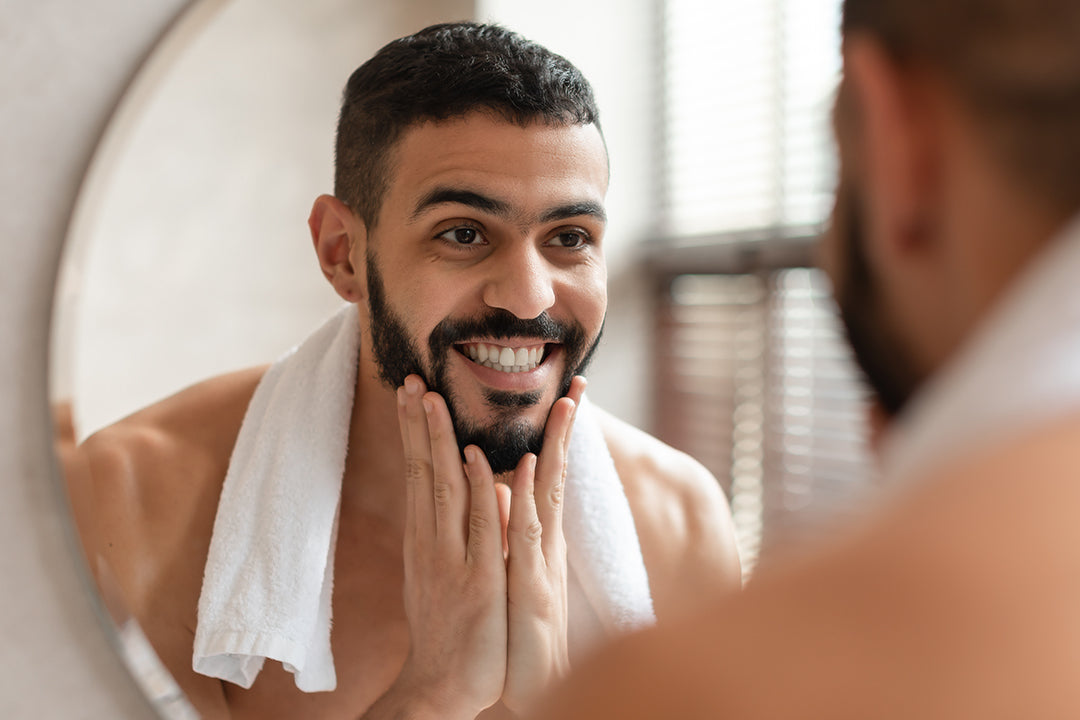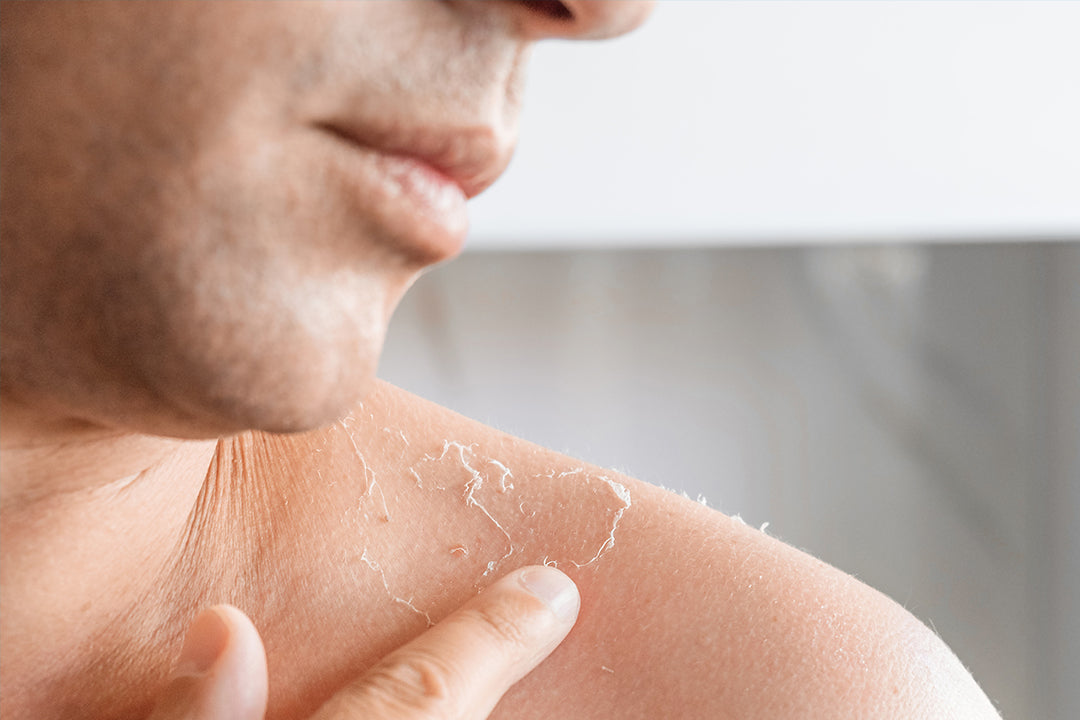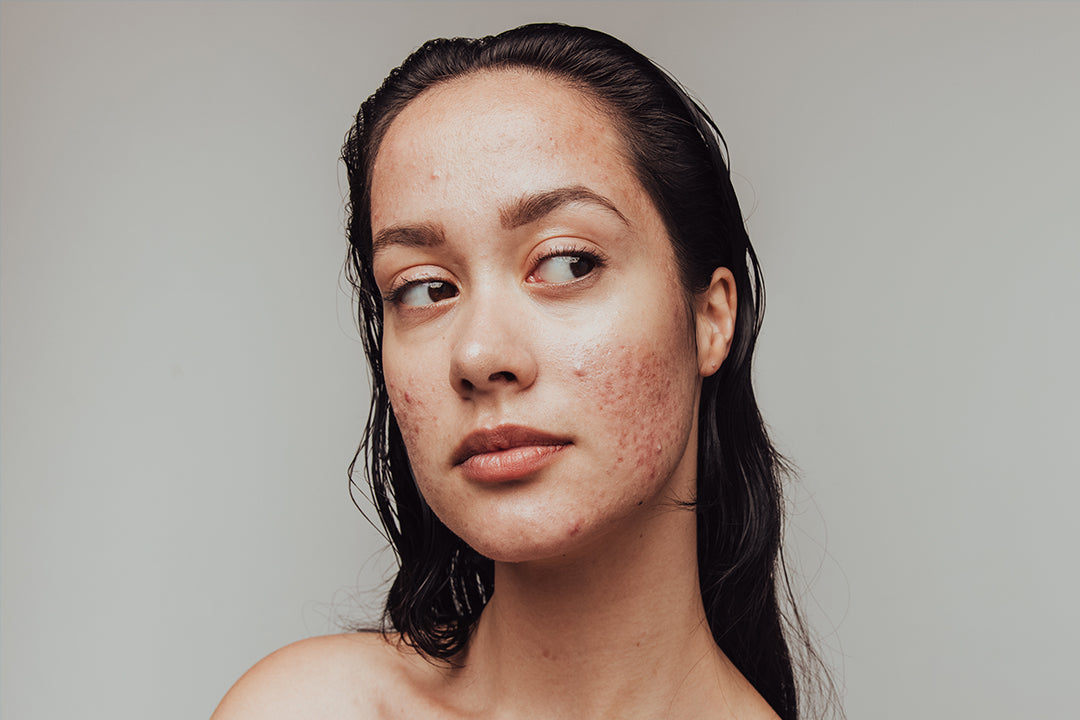I have been getting chemical peels for about seven years in the salon and at home. I started using them because of an acne problem and continued using them to reduce fine lines, giving me a wide range of experiences with chemical peels.
QRxLabs and Mad Hippie are two peels that have piqued my interest lately, and boy, did I not realize how different at-home peels could be.
While these two peels use the same AHA acids, they are drastically different.
I will review their unique characteristics, from the ingredients to the results. Based on my experience with each, you may be surprised to find out which peel is my favorite.
Is QRxLabs or Mad Hippie the Better Peel?
These two peels seem similar on the outside but gave me two very different experiences. I love the immediate and substantial results that QRxLabs Glycolic/Lactic Acid peel gave me. Still, you have to endure some uncomfortableness during the peel process. I think the unpleasantness is worth the results, but some may prefer the more relaxing process with gradual results that Mad Hippies AHA peel gives.

Main Differences Between QRX and Mad Hippie
-
QRxLabs has several different chemical peels from which you can choose, whereas Mad Hippie has one.
-
QRx's peels are potent at the professional level, whereas Mad Hippie's peel is a milder at-home option.
-
You will need the QRx Neutralizer with its peels, whereas the Mad Hippie AHA peel can be left on without being neutralized.
-
QRxLab's peels give more of an instant change, whereas Mad Hippie's provides a gradual change.
-
QRx peels have very few ingredients that get the job done, whereas Mad Hippie has a long list of ingredients to cater to multiple things at once.
QRxLabs Chemical Peels
I honestly had no idea they were allowed to sell glycolic peels with over 20% glycolic acid to the general public. I had only ever gotten one stronger through an esthetician, and if done improperly, they can actually cause damage. I was a little nervous about trying QRxLab's chemical peel, but my regular at-home 10% glycolic acid peel wasn't doing much for me anymore. So, here we are.
You Can Choose From a Wide Range of Peels
QRxLabs offers both AHA and BHA peels in a range of potencies. I have used both types in the past, and they are very different experiences. BHA peels, more commonly known as salicylic peels, are a bit gentler than AHA peels and are meant for acne problems or to minimize pores.
There are two types of AHA peels available in QRxLab's arsenal, including glycolic acids and lactic acids. Glycolic peels are very powerful and work deeper within the skin to minimize fine lines, dark spots, and uneven skin texture. Lactic acids are milder and work on the surface level, helping your skin boost collagen and retain moisture.
I decided to start with something milder from QRxLabs. I chose the Glycolic/Lactic Acid 30/20 Peel. The instructions say to follow the peel with the neutralizer, so I also added that to the cart.

I recommend that anyone not used to these peels start with the lowest percentage as well. If you use one that is too strong from the start, it can cause blistering. You want to try to use the lowest percentage for as long as possible and gradually work your way up to higher percentages.
Simple Ingredients
In reality, you only need two ingredients for a chemical peel to do its job: the acid and water or oil to dilute it. However, it would be a pain in the butt to apply and feel very unpleasant if QRx didn't add a few more things.
There are minimal ingredients inside other than the glycolic and lactic acids. Here is a list of what you can find in it:
-
Distilled water
-
Glycolic and lactic acids
-
A couple of thickening agents to give it a gel consistency
-
Green tea, calendula, and chamomile to help calm the skin
-
A couple of natural bacteria inhibitors
All of the ingredients in the peel are natural except for one: triethanolamine. This ingredient stabilizes the acid so the serum doesn't change its pH and becomes ineffective quickly. You can't find it in the natural world, but it is necessary for these higher-concentration chemical peels.
Testing Out the Peel
I started by washing my face with my usual wash and warm water. The instructions on the bottle say to go to their website for instructions, which is a little aggravating. However, I did so and applied the peel as directed.

I squeezed the product evenly onto my cheeks, chin, and forehead using one full dropper. I used a cotton pad to spread the peel and let it sit for three minutes. My eyes slowly widened as I realized this was not like other at-home peels.

You can definitely feel this stuff working. It doesn't feel more uncomfortable than the peels I've had done in salons, but it does burn and turns my skin bright pink. Once the three minutes were up, I liberally sprayed the neutralizer all over my face. I let it sit for 60 seconds before rinsing it with cool water.

Do not spray as much as I did! I sprayed way too much, mostly because it felt nice, and it traveled right into my eyes. One layer of misting all over the face is probably plenty, unlike the three to four layers I did.
Post QRx Glycolic / Lactic Acids Peel
My skin was pretty pink for about 30 minutes after using the peel. Although, my skin is fairly sensitive and turns pink from things as simple as using a different retinol cream sometimes. It didn't feel very irritated but was a bit dry, as expected, after doing an intense peel.
Before and After
Upon first impression, the peel worked its magic. I even had some underlying acne come up to the surface that I didn't know was there yet. My skin instantly felt smoother to the touch, and the small dry patch on my chin was peeling off.
The next day, I woke up to even smoother-feeling skin that looked super radiant. The skin below my eyes, where I have a few fine lines coming in, looked plumper, and my makeup went on extremely even. Once I finished my makeup, it almost looked as though my skin was polished, and I can't say I've seen my skin like that in a while.

Pros:
-
The gel consistency sits on your skin really well instead of running.
-
These peels are truly professional level, giving you maximum results.
-
You can choose the strength and type of peel you want.
-
The dropper makes it easy to apply right onto the face.
-
The ingredients are natural, sustainable, and simple, with most listed on the bottle's front.
-
My skin instantly felt and looked smoother after applying.
-
The next day, my skin looked much more radiant, and my makeup went on more evenly.
Cons:
-
You must purchase the neutralizer on top of the peel.
-
These peels are strong, so you will feel a slight burn while the peel processes.
-
You need to be careful with these peels because they are so strong they can actually damage your skin.
Mad Hippie
I waited a whole week between trying out the QRxLabs peel and applying this one to ensure my skin had returned to normal. Mad Hippie doesn't make super intense peels like QRxLabs, so I wasn't worried about using this one a week later. I'll dive into Mad Hippies' natural vegan ingredients, the experience during the peel, and the results below.

One Peel with Multiple Benefits
Mad Hippie is all about making your skincare routine as simple as possible so you have plenty of time to worry about more important things in your life. So, they provide one peel that helps with a multitude of skin care problems.
Mad Hippie's AHA exfoliating peel can be used alone and left on overnight, making it a super simple step to add to the nightly routine. Swiping it on your face should only take about 30 seconds, and you're done. Unlike QRxLab's peels, you don't need to follow it up with a neutralizer or moisturizer unless you want to. I always recommend following every skincare routine with moisturizer, though.

Not only is it super easy to use this peel, but it also helps moisturize, boost collagen, and brighten the skin with peptides and antioxidants. Mad Hippie essentially put a few different products into one with this peel.
All Natural Ingredients
Not only does this peel contain the AHA acids that make up a peel, but it also contains a wide range of other ingredients that help with different concerns. They use unique, organic plants, such as apple stem cells, alpine plants, and white tea, which are packed with antioxidants to help reduce fine lines and brighten the skin.
The two types of AHA acids that Mad Hippie uses in their peel are glycolic and lactic acids. The formulation has mostly glycolic acid with a 9% makeup and 1% lactic acid. This is a great concentration for people with sensitive skin. You won't get that burning sensation you get with AHA peels that have over a 20% concentration.
I'm not typically one who loves a product with a laundry list of ingredients like this peel has. However, all of the ingredients seem to be natural and organic and serve some sort of purpose, whether it be to add moisture, help with inflammation, or boost the effects of the acids.

The only ingredient I don't like in this peel is the hydrolyzed soy protein. While this is a plant-based ingredient, it is typically used as a filler and is proven to be comedogenic. It's at the bottom of the list, so there probably isn't much in there. However, putting an ingredient known to clog pores in an exfoliating serum seems counterintuitive.
Using the AHA Exfoliating Peel Overnight
This peel is much more similar to peels I'm used to using at home than the QRxLab's Glycolic / Lactic Acids peel. Typically, I use glycolic peels at home with around 10% acid concentrations, like Mad Hippie's peel. So, I wasn't nervous at all when I added this to my nightly routine.
After cleansing my face, I applied an entire dropper of fluid evenly around my towel-dried face with my fingertips. The consistency was more of a liquid than QRx's gel-like peel, but still thick enough to sit on my face long enough for me to rub it in. The liquid soaked into my skin like a serum, rather than sitting on top of it.

A few seconds after application, I noticed a slight tingle, but nothing uncomfortable like the QRx peel. It was enough to let me know it was working without making me question what I had just done. Small patches of my skin turned slightly pink, which I expected because my skin turns pink with slight irritation.

I waited about ten minutes before applying a lightweight moisturizer to ensure the acids did their work. My skin was still slightly pink in certain spots, but the tingling was gone, and it looked mostly back to normal.
My Skin The Next Day
The next morning, I woke up and immediately looked in the mirror to see if there was a noticeable difference like there was with the QRx peel. My skin's complexion did look a bit more even, but other than that, there wasn't a super noticeable difference right away.
I was not expecting the same instant results as I had with my last peel since it was so much less intense. However, it was still a little disappointing to go from the drastic results I got with the QRxLabs peel to the minute results I got from this one.
I could see this one giving you great results with use over time, but my skin looked pretty much the same as before, with a brighter complexion. However, because this peel is so much milder, you could use it a couple of times a week for buildable results versus once a week or every other week.
Pros:
-
A milder AHA peel with 9% glycolic acid and 1% lactic acid, making it great for sensitive skin.
-
The ingredients are natural, vegan, and environmentally friendly.
-
My skin looked more plump and radiant the following morning after use.
-
More of a thick liquid consistency that soaks right into the skin.
-
I could feel the peel working after application with a slight tingle, but it wasn't uncomfortable.
-
Full of antioxidants, peptides, and vitamins that help smooth your complexion and reduce fine lines.
-
You apply it with a dropper, making it easy to spread evenly across your face.
Cons:
-
Contains soy, which may cause acne and allergic reactions.
-
You must use it more often than QRxLab's peels to get the same results.
QRxLabs vs. Mad Hippie FAQ's
Question: What does an AHA peel do?
Answer: AHA peels (Alpha Hydroxy Acid peels) are a chemical method of exfoliation that removes dead skin cells from the top layer of skin. The acid works on a cellular level, dissolving proteins that bond dead skin cells to the surface of your skin. These peels can help reduce fine lines, scarring, and dark spots, giving you a more even complexion and smoother skin texture.
Question: Can I use retinol after an AHA product?
Answer: You can use retinol after an AHA peel because retinol works deeper in the skin to promote cellular turnover, whereas chemical peels work mostly on the skin's surface. If you have sensitive skin, you may want to hold off on the retinol until the next day. Wait at least 30 minutes after applying the AHA product before applying retinol to avoid any irritation.
Question: How often can you do an AHA peel?
Answer: Depending on your AHA peel's potency, it can be applied twice a week to every two weeks. Most at-home AHA peels contain less than 20% glycolic or lactic acid, which can be applied up to twice a week. Do not reapply a peel if your skin is peeling from a previous application or if you notice irritation.
Hands Down, My Favorite AHA Peel: QRx Labs Glycolic/Lactic Acid Peel
Even though the QRxLabs Glycolic/Lactic acid peel was extremely uncomfortable to use, this one was my favorite of the two. The instant results I got from it overruled the three minutes of slight burning I had to endure. I almost wish I could do the QRx peel more often than once a week because I loved the way my skin looked and felt for the next week.
Although I could handle putting myself through that uncomfortable routine for instant gratification, it does not mean it is for everyone. If you can not stand a burning sensation, I do not recommend QRxLabs peels. Gradually building your way to smoother skin with a low-concentration peel like Mad Hippie's is the better option for you.
–––––
Author Haley Parker is a Licensed Cosmetologist and Beauty Trend Reviewer
With a decade of experience in the beauty industry, Haley is more than a licensed cosmetologist; she's a pioneer in spotting and setting trends. Always tuned into the latest developments in beauty, she's dedicated to helping others achieve their most radiant selves. Haley goes beyond offering skincare advice—she actively tests and reviews the latest beauty products and only recommends the best. Follow Haley for a blend of beauty, wellness, and exploration!








